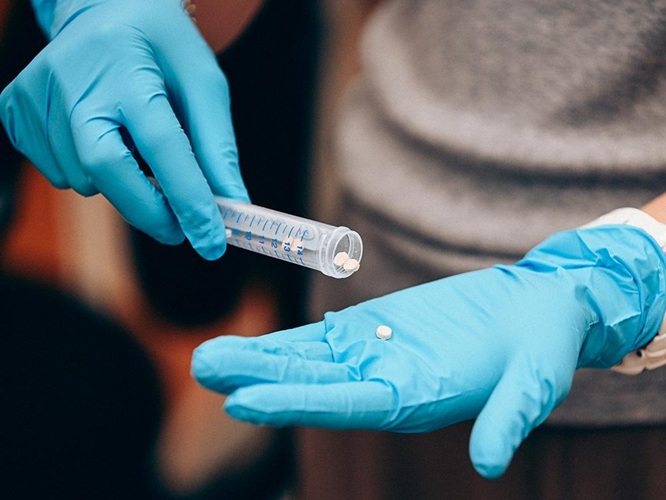3D-Printed Cast Improves Patient Comfort
|
By HospiMedica International staff writers Posted on 08 Jul 2013 |
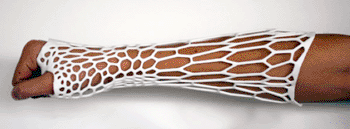
Image: The Cortex 3D custom-printed nylon cast (Photo courtesy of Jake Evill Design).
A concept exoskeletal cast design provides a localized support system that is fully ventilated, extremely light, waterproof, hygienic, recyclable, and stylish.
The Cortex cast is a three-dimensional (3D) custom-printed nylon cast generated from a scan of a patient’s limb and an X-ray to identify the zones that need the most support. The resulting fabricated cast is thinner and lighter than traditional plaster casts, yet at the same time is just as strong and durable; the denser areas of the cast’s lattice provide additional stability and support at and around the point of the fracture. Moreover, as the Cortex is fully ventilated, showering is easier, and smell and itch are not an issue as the skin is easily accessible.
The exoskeletal cast is delivered printed and ready to wear. One side is open to enable placement, and once fitted, it is snapped close with durable built-in fasteners. The Cortex cast mesh grain is designed to be tightest at the fracture sight, providing extra supports where needed. The cast design also uses less material to produce, and since the material is recyclable for another cast, there is less overall waste. The concept design is the brainchild of Jake Evill, a graduate of the architecture and design school at Victoria University (Wellington, New Zealand).
“Cortex exoskeletal cast provides a highly technical and trauma zone localized support system,” said Mr. Evill. “Patients would first receive an X-ray to pinpoint the nature of the break and would next have their arm scanned to determine the outer shape of their limb. Lastly the Cortex cast would be 3D-printed, with optimized levels of support around the break area to provide a snug fit.”
An orthopedic cast is a shell, frequently made from plaster, encasing a limb (or other parts of the body) to hold broken bones in place until healing is confirmed. The cast is made of cotton bandages that have been combined with plaster of Paris (calcined gypsum), which hardens after it has been wetted. Bandages of synthetic materials are also available, often knitted fiberglass bandages impregnated with polyurethane. While these are lighter and dry much faster, plaster can fitted more snugly, and therefore makes for a more comfortable fit. In addition, plaster is much smoother and does not snag clothing or abrade the skin.
Related Links:
Jake Evill Design
Victoria University
The Cortex cast is a three-dimensional (3D) custom-printed nylon cast generated from a scan of a patient’s limb and an X-ray to identify the zones that need the most support. The resulting fabricated cast is thinner and lighter than traditional plaster casts, yet at the same time is just as strong and durable; the denser areas of the cast’s lattice provide additional stability and support at and around the point of the fracture. Moreover, as the Cortex is fully ventilated, showering is easier, and smell and itch are not an issue as the skin is easily accessible.
The exoskeletal cast is delivered printed and ready to wear. One side is open to enable placement, and once fitted, it is snapped close with durable built-in fasteners. The Cortex cast mesh grain is designed to be tightest at the fracture sight, providing extra supports where needed. The cast design also uses less material to produce, and since the material is recyclable for another cast, there is less overall waste. The concept design is the brainchild of Jake Evill, a graduate of the architecture and design school at Victoria University (Wellington, New Zealand).
“Cortex exoskeletal cast provides a highly technical and trauma zone localized support system,” said Mr. Evill. “Patients would first receive an X-ray to pinpoint the nature of the break and would next have their arm scanned to determine the outer shape of their limb. Lastly the Cortex cast would be 3D-printed, with optimized levels of support around the break area to provide a snug fit.”
An orthopedic cast is a shell, frequently made from plaster, encasing a limb (or other parts of the body) to hold broken bones in place until healing is confirmed. The cast is made of cotton bandages that have been combined with plaster of Paris (calcined gypsum), which hardens after it has been wetted. Bandages of synthetic materials are also available, often knitted fiberglass bandages impregnated with polyurethane. While these are lighter and dry much faster, plaster can fitted more snugly, and therefore makes for a more comfortable fit. In addition, plaster is much smoother and does not snag clothing or abrade the skin.
Related Links:
Jake Evill Design
Victoria University
Latest Critical Care News
- New Autoinjector Could Transform Trauma Care in Severe Bleeding Emergencies
- Portable Light-Based Brain Monitor Improves Dementia Diagnosis
- New Ultrasound Technique Enables Safer Vein Access in Critically Ill Patient
- CVD Risk Prediction Tool Could Guide Statin Therapy
- Wearables Could Revolutionize Pregnancy Monitoring and Detect Abnormalities
- AI Model Identifies AF Patients Requiring Blood Thinners to Prevent Stroke
- Soft Robot Intubation Device Could Save Lives
- Bee-Sting Inspired Wearable Microneedles to Revolutionize Drug Delivery
- Wearable Smart Patch Runs Tests Using Sweat Instead of Blood
- AI Improves Prediction of CKD Progression to End Stage Renal Disease
- First-Of-Its-Kind Online Tool to Revolutionize Treatment of High Blood Pressure
- Temperature-Sensing Patch Enables Early Breast Cancer Detection
- AI Stethoscope Detects Three Heart Conditions In 15 Seconds
- AI Powered Mini-Camera Predicts Recurrent Heart Attack
- Breakthrough Metamaterial Technology Paves Way for Next-Gen Wearable Devices
- AI Tool Helps Pinpoint Problem Heart Cells in Ventricular Tachycardia
Channels
Surgical Techniques
view channel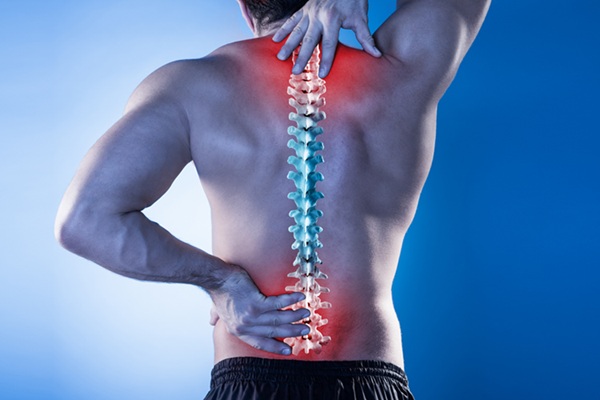
AI Spine Model Could Reduce Surgical Risks
Nearly 3 in 10 adults in the United States have experienced lower back pain in any three months, making it the most common musculoskeletal pain. Back pain is one of the leading causes of disability worldwide,... Read more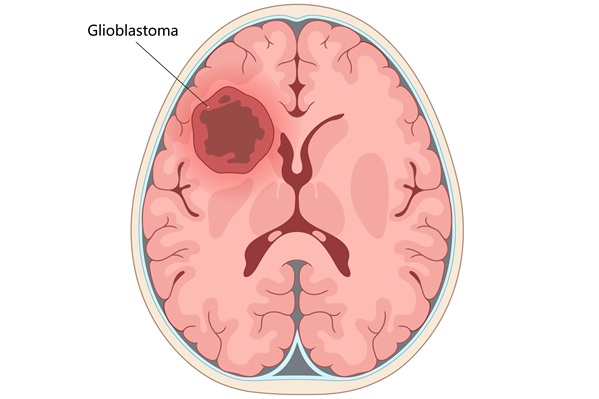
Novel Method Uses Interstitial Fluid Flow to Predict Where Brain Tumor Can Grow Next
Glioblastoma is one of the most aggressive brain cancers, with patients surviving on average only 15 months after diagnosis. Surgery and radiation can temporarily control the tumor, but the disease almost... Read more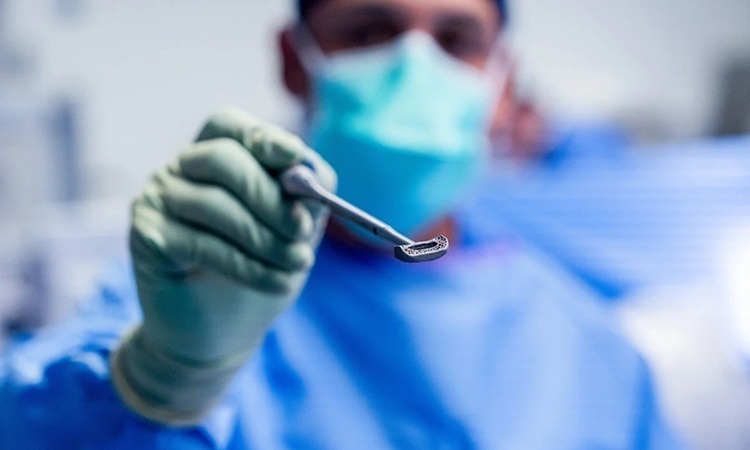
World’s First Custom Anterior Cervical Spine Surgery Performed Using Personalized Implant
Anterior cervical fusion has been performed since the 1950s and is one of the most common spine procedures. Traditional implants are designed as one-size-fits-all, which can affect spinal alignment, healing,... Read morePatient Care
view channel
Revolutionary Automatic IV-Line Flushing Device to Enhance Infusion Care
More than 80% of in-hospital patients receive intravenous (IV) therapy. Every dose of IV medicine delivered in a small volume (<250 mL) infusion bag should be followed by subsequent flushing to ensure... Read more
VR Training Tool Combats Contamination of Portable Medical Equipment
Healthcare-associated infections (HAIs) impact one in every 31 patients, cause nearly 100,000 deaths each year, and cost USD 28.4 billion in direct medical expenses. Notably, up to 75% of these infections... Read more
Portable Biosensor Platform to Reduce Hospital-Acquired Infections
Approximately 4 million patients in the European Union acquire healthcare-associated infections (HAIs) or nosocomial infections each year, with around 37,000 deaths directly resulting from these infections,... Read moreFirst-Of-Its-Kind Portable Germicidal Light Technology Disinfects High-Touch Clinical Surfaces in Seconds
Reducing healthcare-acquired infections (HAIs) remains a pressing issue within global healthcare systems. In the United States alone, 1.7 million patients contract HAIs annually, leading to approximately... Read moreHealth IT
view channel
Printable Molecule-Selective Nanoparticles Enable Mass Production of Wearable Biosensors
The future of medicine is likely to focus on the personalization of healthcare—understanding exactly what an individual requires and delivering the appropriate combination of nutrients, metabolites, and... Read moreBusiness
view channel
Philips and Masimo Partner to Advance Patient Monitoring Measurement Technologies
Royal Philips (Amsterdam, Netherlands) and Masimo (Irvine, California, USA) have renewed their multi-year strategic collaboration, combining Philips’ expertise in patient monitoring with Masimo’s noninvasive... Read more
B. Braun Acquires Digital Microsurgery Company True Digital Surgery
The high-end microsurgery market in neurosurgery, spine, and ENT is undergoing a significant transformation. Traditional analog microscopes are giving way to digital exoscopes, which provide improved visualization,... Read more
CMEF 2025 to Promote Holistic and High-Quality Development of Medical and Health Industry
The 92nd China International Medical Equipment Fair (CMEF 2025) Autumn Exhibition is scheduled to be held from September 26 to 29 at the China Import and Export Fair Complex (Canton Fair Complex) in Guangzhou.... Read more











